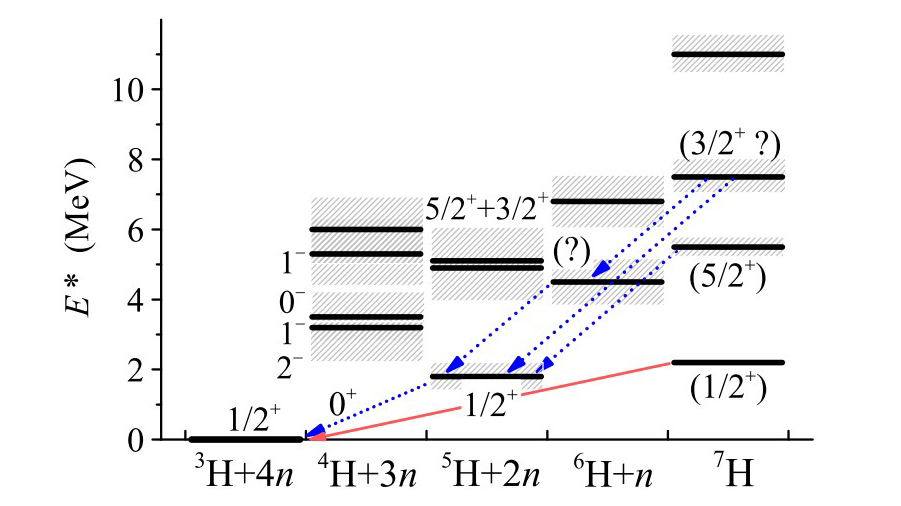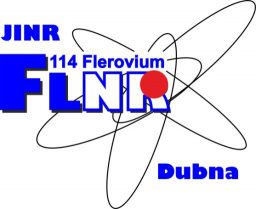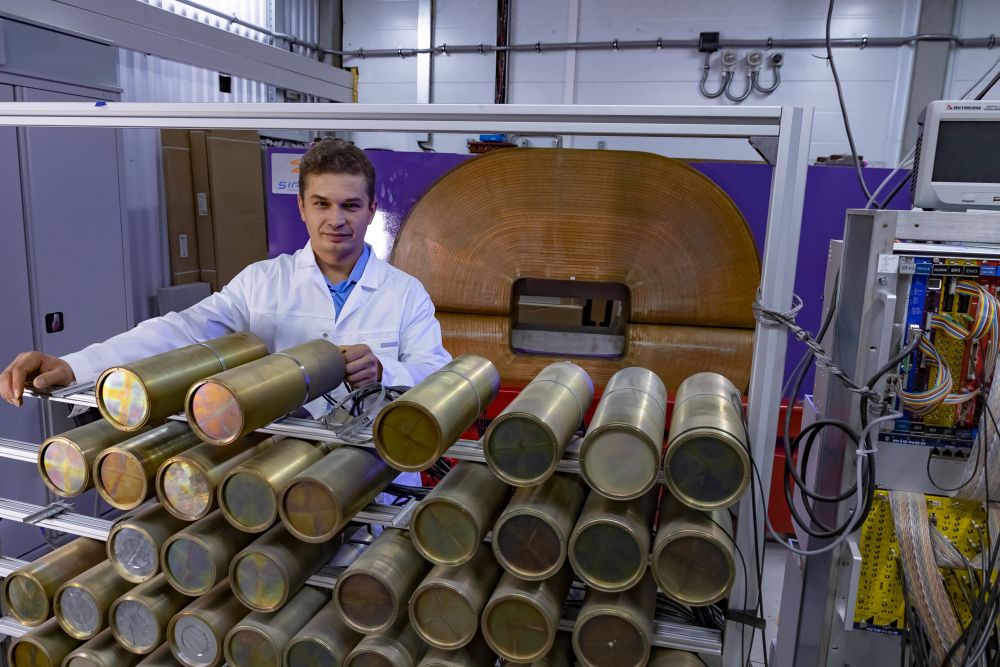A new mode of nuclear decay was discovered when studying superheavy hydrogens at FLNR
On September 22, 2023 at the 134th session of the JINR Scientific Council a group of FLNR scientists: Andrei Bezbakh, Leonid Grigorenko, Alexander Gorshkov, Sergey Krupko, Ivan Muzalevskii, Evgeny Nikolskii, Gurgen Ter-Akopian, Andrey Fomichev, Vratislav Chudoba, Pavel Sharov were awarded Second JINR prize 2022 in Experimental Research contest for “New data on the spectra of 7H, 6H superheavy hydrogen isotopes and the discovery of a spontaneous decay mode with the emission of 4 neutrons” series of works.
One of the long-standing indicative problems of experimental nuclear physics – detection of 6H and 7H, the heaviest hydrogen isotopes was successfully solved by the FLNR scientists during the first ACCULINNA-2 experiments. New data on 6H and 7H, the superheavy hydrogen isotopes spectra were obtained and a variant of spontaneous nuclear decay with the simultaneous emission of four neutrons was discovered. Now scientists continue to improve experimental facilities and prepare for new experiments.
The research was aimed at studying the light exotic nuclei of hydrogen-6 and hydrogen-7 which plays the principal role in understanding the properties of other isotopes.
Andrei Bezbakh said that 6H and 7H, the superheavy hydrogen isotopes have been one of the nuclear physics enigmas for more than forty years already and were of great interest for a number of reasons.
These are the most neutron-excess systems imaginable: there are 6 and 7 neutrons respectively for one proton in the nucleus. In 7H nucleus the p3/2 subshell for hydrogen isotopes is closed – it’s impossible “to put” more nucleons in this orbital therefore in case of its discovery the new opportunities open up for studying shell dynamics under conditions of extreme proton deficiency.
The closure of this subshell in 7H also means that the existence of the long-lived heavier hydrogen isotopes is very unlikely. This is beyond the existing physical concepts and theoretical predictions.
Besides it’s very likely that the decay of 7H ground state has a unique dynamics – the so-called “true” 5-particle decay 7H –> 3H + 4n. Four neutrons can be emitted almost simultaneously at that. Such decay dynamics implies exceptionally long lifetimes to the point that the existence of the new mode of radioactive decay – four-neutron radioactivity is quite likely. 6H-7H long lifetimes means some fractions of a second enough for detectors to record these isotopes.
The first proven case of such a variant of 7H decay was obtained in experiments on ACCULINNA-2 fragment separator and U400 cyclotron at FLNR JINR.

Fig.2 A diagram of levels and possible 6,7H decay channels.
The red arrow corresponds to the open channel with emission of four neutrons.
By the results of the work devoted to the search for 7H low-lying states in 2Н(8Не,3Не)7Н reaction and 6Н ones in 2Н(8Не,4Не)6Н reaction the following main conclusions were made:
- the position of 7H ground state (presumably 1/2+) is defined to be 2.2(5) MeV above 3H+4n threshold of of width determined by ~ 1 MeV experimental resolution.
- A doublet (presumably 5/2+-3/2+) of relatively narrow states is observed at 5.5(3) and 7.5(3) energies. Doublet centroid agrees well with 7H excited state 6.5 MeV observed in [2] experiment and is insoluble in energy under its conditions.
- The exceptionally low cross section of 7H ground state population (~ 25 µb/sr) is explained by the extreme peripherality of interaction in 8He+d channel also confirmed by dσ/dΩc. m. angular distributions. This reflects the enhanced amorphousness and “fragility” of this neutron-excess system which doesn’t survive central collisions.
- The obtained results explain the failure of the search for 7H ground state in previous experiments. At a low experimental resolution of ~ 2 MeV or worse all previously observed systems in 7H spectrum had to merge into one continuous spectrum and the weakly populated 7H ground state can “sink” into background events and events from the first excited state.
- The previously declared 6H ground state at ~ 2.6‒2.9 energy above 3H+3n threshold was not observed in our 2Н(8Не,4Не)6Н experiment with the cross section limit of dσ/dΩc. m. < 5 µb/sr.
- A broad structure was observed in 6H spectrum at 6.8 MeV energy above 3H+3n threshold with dσ/dΩc. m. ~ 190 µb/sr cross section, typical for a direct deuteron transfer reaction. This structure can be interpreted as one or several resonant states with a lower energy limit of ET = 4.5 MeV for the ground state.
- The scheme of levels and decays of 7H and 6H “superheavy” hydrogen isotopes obtained in [2-4] experiments (Fig.2) allows to assert that the decay of 7H nucleus ground state is possible with the simultaneous emission of four neutrons (“true” 5-particle decay 3H + 4n). This is the first proven case of the existence of such a nuclear decay mode.
- In the first ACCULINNA-2 experiments the scientists succeeded in resolving the one of the long-standing indicative problems of experimental nuclear physics – detection of 6H and 7H, the heaviest hydrogen isotopes and advanced toward studying a new mode of spontaneous nuclear decay with the simultaneous emission of 4n as well. The stages of this work were repeatedly presented at the international nuclear physics conferences, FLNR and JINR seminars.
In the future the team of scientists will continue to realize the FLNR JINR ambitious scientific program including the study of exotic 7H nuclei.

